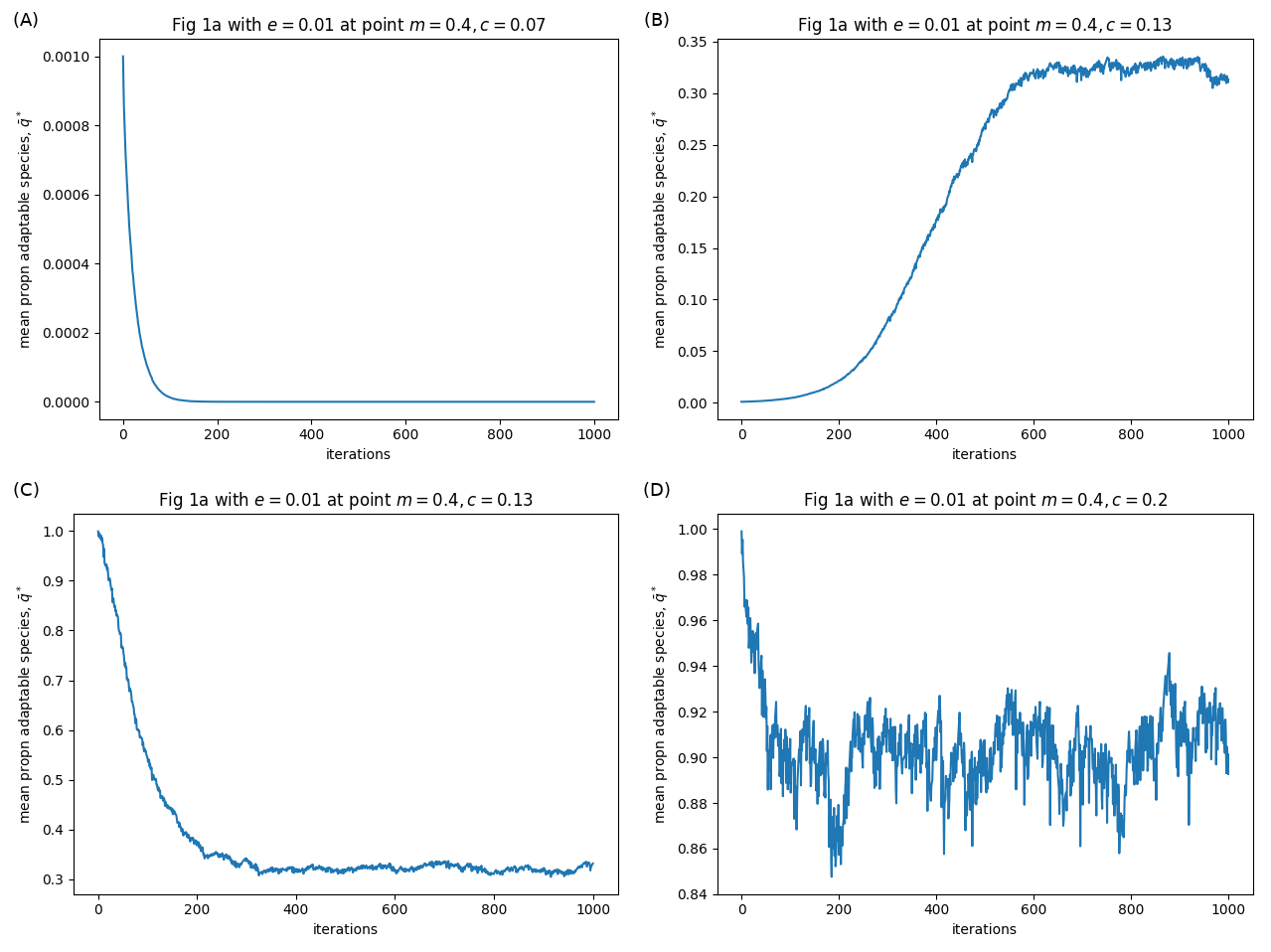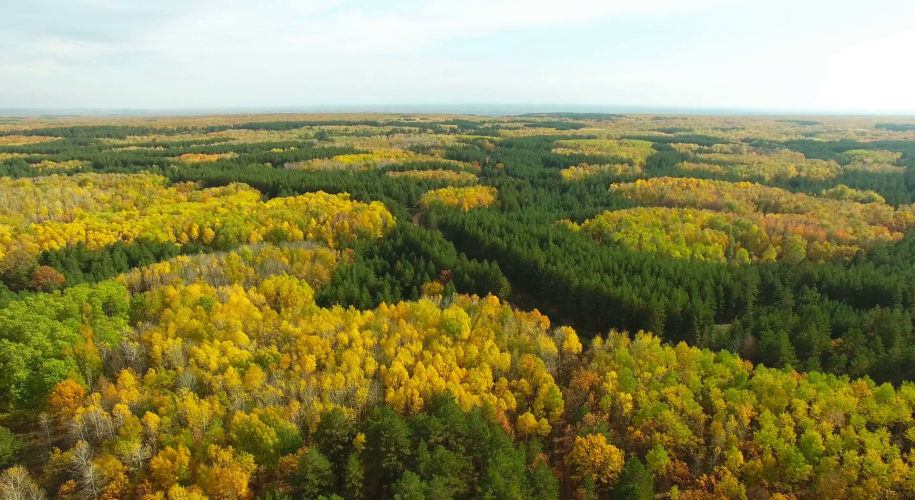Filed Under #dispersal
Aug 9, 2019
 I recently read a paper by Kawecki (2017), which presents a new mechanism for something analogous to fugitive coexistence. The paper has a really great literature overview, which I won’t be able to do justice here. In short, fugitive coexistence is when an inferior species persists on a patchy landscape by being a better coloniser: when a local extinction occurs, they are quicker to arrive at the patch and so exploit the time window before the superior competitor arrives. But Kawecki had another idea about how coexistence could occur. In the paper, Kawecki explores the coexistence of a ‘jack of...
I recently read a paper by Kawecki (2017), which presents a new mechanism for something analogous to fugitive coexistence. The paper has a really great literature overview, which I won’t be able to do justice here. In short, fugitive coexistence is when an inferior species persists on a patchy landscape by being a better coloniser: when a local extinction occurs, they are quicker to arrive at the patch and so exploit the time window before the superior competitor arrives. But Kawecki had another idea about how coexistence could occur. In the paper, Kawecki explores the coexistence of a ‘jack of...
Playing with a new model for fugitive coexistence
 I recently read a paper by Kawecki (2017), which presents a new mechanism for something analogous to fugitive coexistence. The paper has a really great literature overview, which I won’t be able to do justice here. In short, fugitive coexistence is when an inferior species persists on a patchy landscape by being a better coloniser: when a local extinction occurs, they are quicker to arrive at the patch and so exploit the time window before the superior competitor arrives. But Kawecki had another idea about how coexistence could occur. In the paper, Kawecki explores the coexistence of a ‘jack of...
I recently read a paper by Kawecki (2017), which presents a new mechanism for something analogous to fugitive coexistence. The paper has a really great literature overview, which I won’t be able to do justice here. In short, fugitive coexistence is when an inferior species persists on a patchy landscape by being a better coloniser: when a local extinction occurs, they are quicker to arrive at the patch and so exploit the time window before the superior competitor arrives. But Kawecki had another idea about how coexistence could occur. In the paper, Kawecki explores the coexistence of a ‘jack of...
Jun 26, 2018
 What allows a population in a heterogeneous landscape to become locally adapted? In general, adaptation to a rare habitat type is difficult because divergent selection is counter-acted by the homogenising effects of gene-flow. However adaptation to a rare habitat type may occur if it has a higher quality, so that a greater number of offspring can be produced there, to compensate for its relative rarity in the landscape. In a new paper published in Ecology Letters, we focused on an alternative way in which a habitat may be considered to have higher quality: by increasing the quality, rather than the...
What allows a population in a heterogeneous landscape to become locally adapted? In general, adaptation to a rare habitat type is difficult because divergent selection is counter-acted by the homogenising effects of gene-flow. However adaptation to a rare habitat type may occur if it has a higher quality, so that a greater number of offspring can be produced there, to compensate for its relative rarity in the landscape. In a new paper published in Ecology Letters, we focused on an alternative way in which a habitat may be considered to have higher quality: by increasing the quality, rather than the...
Carryover effects and local adaptation
 What allows a population in a heterogeneous landscape to become locally adapted? In general, adaptation to a rare habitat type is difficult because divergent selection is counter-acted by the homogenising effects of gene-flow. However adaptation to a rare habitat type may occur if it has a higher quality, so that a greater number of offspring can be produced there, to compensate for its relative rarity in the landscape. In a new paper published in Ecology Letters, we focused on an alternative way in which a habitat may be considered to have higher quality: by increasing the quality, rather than the...
What allows a population in a heterogeneous landscape to become locally adapted? In general, adaptation to a rare habitat type is difficult because divergent selection is counter-acted by the homogenising effects of gene-flow. However adaptation to a rare habitat type may occur if it has a higher quality, so that a greater number of offspring can be produced there, to compensate for its relative rarity in the landscape. In a new paper published in Ecology Letters, we focused on an alternative way in which a habitat may be considered to have higher quality: by increasing the quality, rather than the...
Jul 23, 2017
 Background to the work Bemisia tabaci biotype B, commonly known as silverleaf whitefly, is a sap feeding insect that has spread globally via trade in ornamental plants. It was first detected in Australia in 1994 (Gunning et al. 1995) and has since become a crop pest and an economic problem. Eretmocerus hayati is a small parasitoid wasp that parasitises Bemisia tabaci by laying a single egg under the juveniles. Eretmocerus species have proved effective at controlling silverleaf whitefly in other countries (Goolsby et al. 2005), and so in 2004 the decision was made to release Eretmocerus hayati in Australia as...
Background to the work Bemisia tabaci biotype B, commonly known as silverleaf whitefly, is a sap feeding insect that has spread globally via trade in ornamental plants. It was first detected in Australia in 1994 (Gunning et al. 1995) and has since become a crop pest and an economic problem. Eretmocerus hayati is a small parasitoid wasp that parasitises Bemisia tabaci by laying a single egg under the juveniles. Eretmocerus species have proved effective at controlling silverleaf whitefly in other countries (Goolsby et al. 2005), and so in 2004 the decision was made to release Eretmocerus hayati in Australia as...
Modelling small insect dispersal
 Background to the work Bemisia tabaci biotype B, commonly known as silverleaf whitefly, is a sap feeding insect that has spread globally via trade in ornamental plants. It was first detected in Australia in 1994 (Gunning et al. 1995) and has since become a crop pest and an economic problem. Eretmocerus hayati is a small parasitoid wasp that parasitises Bemisia tabaci by laying a single egg under the juveniles. Eretmocerus species have proved effective at controlling silverleaf whitefly in other countries (Goolsby et al. 2005), and so in 2004 the decision was made to release Eretmocerus hayati in Australia as...
Background to the work Bemisia tabaci biotype B, commonly known as silverleaf whitefly, is a sap feeding insect that has spread globally via trade in ornamental plants. It was first detected in Australia in 1994 (Gunning et al. 1995) and has since become a crop pest and an economic problem. Eretmocerus hayati is a small parasitoid wasp that parasitises Bemisia tabaci by laying a single egg under the juveniles. Eretmocerus species have proved effective at controlling silverleaf whitefly in other countries (Goolsby et al. 2005), and so in 2004 the decision was made to release Eretmocerus hayati in Australia as...